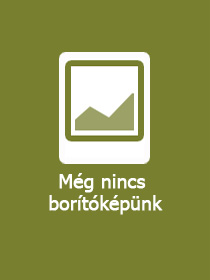
Earth in Flames
How an Asteroid Killed the Dinosaurs and How We Can Avoid a Similar Fate From Nuclear Winter
-
10% KEDVEZMÉNY?
- A kedvezmény csak az 'Értesítés a kedvenc témákról' hírlevelünk címzettjeinek rendeléseire érvényes.
- Kiadói listaár GBP 22.99
-
11 635 Ft (11 081 Ft + 5% áfa)
Az ár azért becsült, mert a rendelés pillanatában nem lehet pontosan tudni, hogy a beérkezéskor milyen lesz a forint árfolyama az adott termék eredeti devizájához képest. Ha a forint romlana, kissé többet, ha javulna, kissé kevesebbet kell majd fizetnie.
- Kedvezmény(ek) 10% (cc. 1 164 Ft off)
- Discounted price 10 472 Ft (9 973 Ft + 5% áfa)
11 635 Ft

Beszerezhetőség
Még nem jelent meg, de rendelhető. A megjelenéstől számított néhány héten belül megérkezik.
Why don't you give exact delivery time?
A beszerzés időigényét az eddigi tapasztalatokra alapozva adjuk meg. Azért becsült, mert a terméket külföldről hozzuk be, így a kiadó kiszolgálásának pillanatnyi gyorsaságától is függ. A megadottnál gyorsabb és lassabb szállítás is elképzelhető, de mindent megteszünk, hogy Ön a lehető leghamarabb jusson hozzá a termékhez.
A termék adatai:
- Kiadó OUP USA
- Megjelenés dátuma 2025. július 15.
- ISBN 9780197799703
- Kötéstípus Keménykötés
- Terjedelem280 oldal
- Méret 235x156 mm
- Nyelv angol 700
Kategóriák
Rövid leírás:
Earth in Flames discusses how the dinosaurs died, and how their deaths parallel what might happen to people after a nuclear war. The book reflects on the odds of future asteroid impacts, how to stop them, and what the readers personally and together can do to prevent a nuclear war, so that humans don't end up like the dinosaurs.
TöbbHosszú leírás:
Sixty-six million years ago an asteroid as large as Mt. Everest hit what is now the Yucatan Peninsula at a speed ten times faster than the fastest rifle bullet. Debris from the impact blew into space, re-entered the atmosphere as a swarm of shooting stars that burned the global forests and grasslands, leaving behind a thin global layer containing rock from the asteroid and from Mexico, and smoke from the fires. This layer marks one of the greatest extinctions in Earth history including not just dinosaurs, but also fish, plankton, ammonites, and plants making up about 75% of the known species. The major culprits in these extinctions are loss of sunlight due to absorption by the smoke and decade-long ice age temperatures.
A nuclear war with just a few hundred of the world's 12,000 nuclear weapons targeted on densely populated cities could plunge Earth into the same types of conditions that the dinosaurs experienced. Even a war between India and Pakistan could kill 1 to 3 billion people from starvation due to agricultural failure, while 6 billion people might starve following a war involving Russia, NATO, and the U.S.
The book describes how the dinosaurs died, and how their deaths parallel what might happen to people after a nuclear war. The book reflects on the odds of future asteroid impacts, how to stop them, and ends with what the readers personally and together can do to prevent a nuclear war, so that humans don't end up like the dinosaurs.
Tartalomjegyzék:
Preface: How We Met and a Brief History
Prologue
Part I Impacts, Asteroid Winters, and Dinosaurs
The Power of Asteroids and Comets: When Will the Next Big One Hit?
Clues from Craters, Assured Destruction, and Ejecta Layers
Worldwide Fires Killed the Dinosaurs
Can We Stop an Asteroid or Comet Collision in the Future?
Part II Humans and Nuclear Winter
You Too Could Build a Bomb: It Can't Be Hard; There Are a Lot of Them
How Many Bombs Are Out There, and How Could They Be Delivered?
Scenarios for War and Near Misses
Are You Being Targeted with a Nuclear Weapon?
Assured Destruction by Nuclear Explosions
Firestorms in Cities
Climate Disaster, Climate Models, and Natural Analogs
Impacts on Humans of Nuclear War
Part III Epilogue. Could It Happen?
Will Humans Become Extinct from an Asteroid Collision or a Nuclear War?
Can We Avoid Nuclear War?
Glossary
Acknowledgments
References
Index


Earth in Flames: How an Asteroid Killed the Dinosaurs and How We Can Avoid a Similar Fate From Nuclear Winter
Iratkozzon fel most és részesüljön kedvezőbb árainkból!
Feliratkozom
11 635 Ft



